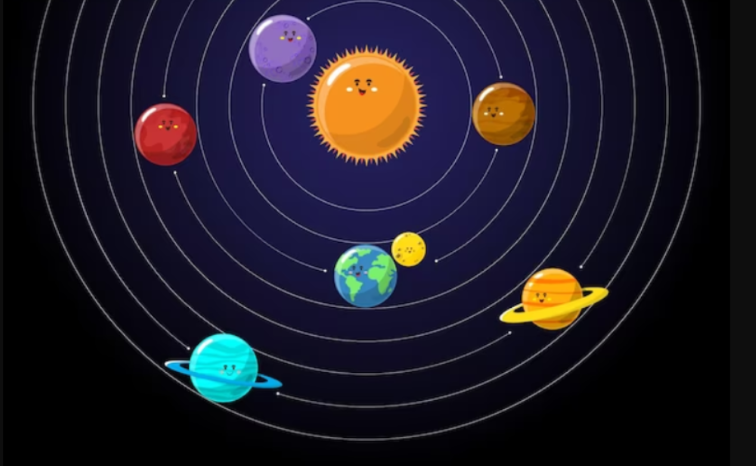Our Earth as seen from Venus

It’s not easy being an astronomer on Venus (use your imagination fellow reader). Aside from the fact that it is impossible to live on it, its atmosphere is thick and opaque.
The only way to learn anything about the universe is to observe it from high altitudes, above the dense layers of the atmosphere. According to some accounts, only in that Venusian space are there any such chances for something alive.
Let’s say that you are observing the universe from Venus from such a height where the atmosphere is not too opaque. During the day, the Sun would shine so brightly that no astronomical observation would be possible.
But during the night, what would catch the eye of every observer are the three planets that would occasionally appear in the sky. One is Mercury, which, when it is in elongation (visually distant from the Sun from the observer’s position), would be strikingly bright.
Depending on whether it is in the night sky or not, Jupiter would occasionally be the brightest object at night. Sometimes it would be Earth. And she interests us the most.
The best time to observe the Earth from Venus is when it is in opposition, i.e. when it is on the opposite side of the Sun. In such a position, two planets approach each other at less than 50 million kilometers. Sometimes that distance is only about 40 million km.
Image by jcomp on Freepik
In such a position, the Earth from Venus looks almost three times larger than Mars for us, and that is when it is in a good position. Mars, when it is in opposition, approaches us at most a little over 50 million kilometers, but it is twice as small as our planet. So, from Venus, the Earth would be visible much better than we can see Mars.
Even with a four-inch amateur telescope, a Venusian would be able to see some large landforms on Earth. With a stronger telescope of, say, 24 inches, Venusians on Earth could easily see continents, oceans, polar ice caps, and even Greenland.
With a really powerful telescope such as the Hubble Space Telescope, you would also be able to see the largest Hawaiian island in the middle of the Pacific Ocean.
A special advantage for Venus astronomers would be its slow rotation. In fact, one day on Venus lasts as long as 243 of our Earth days. Astrophotographers would enjoy Venus.
Imagine that the targeted object stays in the eyepiece for hours and does not move without any motor intervention. And the Earth would be crystal clear in the photos. And the only thing that would interfere with a good picture are clouds, not Venusian but Earthly.
Want to read more about the universe? Visit our blog!

